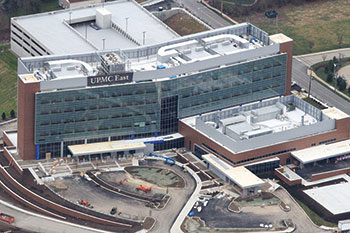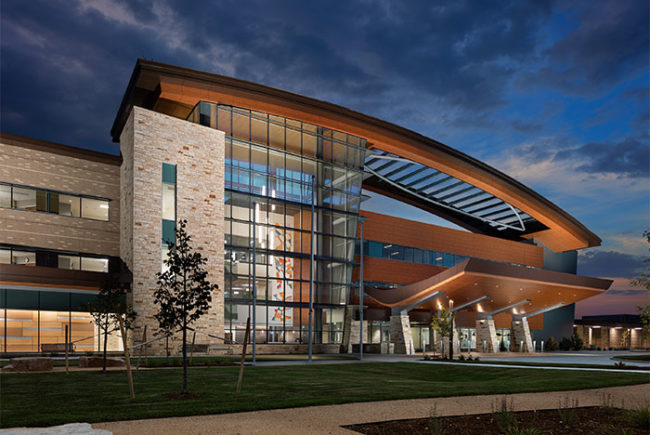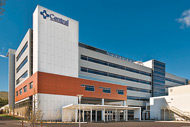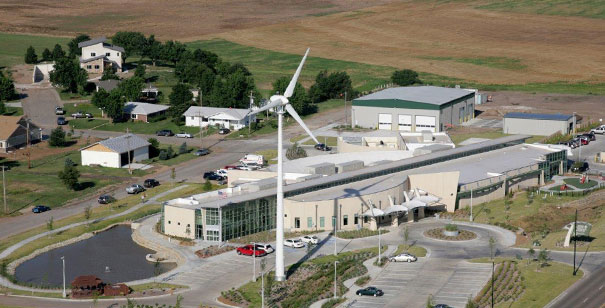 |
|
Photo courtesty of Kiowa County Memorial Hospital Kiowa County Memorial Hospital is the first LEED platinum certified critical access health care facility in the United States. |
Out of the wreckage of a tornado that flattened nearly the entire town of Greensburg, Kan., in 2007 arose a golden opportunity to rebuild to a level of sustainability not achieved anywhere in the world.
Rebuilding the severely damaged Kiowa County Memorial Hospital created, well, a platinum opportunity that the health care facility and project designers, engineers and builders established and ultimately achieved.
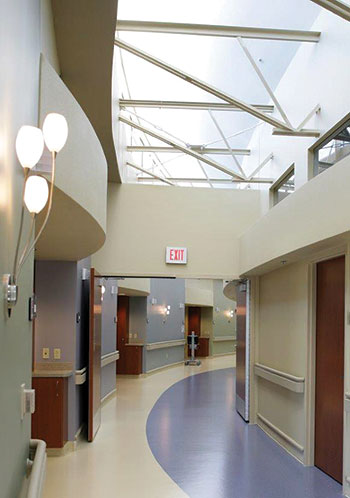 |
|
Photo courtesy of Kiowa County Memorial Hospital The hospital maximizes use of natural daylighting to save energy. |
Kiowa County Memorial Hospital is the first critical access care hospital in the United States to earn Leadership in Energy and Environmental Design (LEED) Platinum rating, the highest rating the program offers.
The 50,000 sq. ft., 15-bed hospital now serves as a model of sustainability for other small health care facilities and many of its efficiency measures have been incorporated into the Advanced Energy Design Guide for Small Hospitals and Healthcare Facilities.
The guide was developed by the U.S. Department of Energy and the National Renewable Energy Laboratory in partnership with national professional societies.
Indeed, the hospital is a model of efficiency and sustainability.
"The tornado not only destroyed our community and hospital, it caused a major shift in how we make decisions,” says Mary Sweet, administrator, Kiowa County Memorial Hospital.
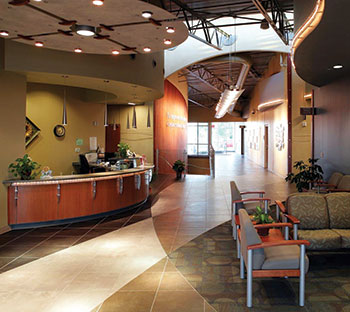 |
|
Photo courtesy of Kiowa County Memorial Hospital Kiowa Memorial’s interior design emphasizes a home-like effect. |
"In rebuilding we learned not to look at the initial cost only, but to look at environmental impact, long-term cost savings, and sustainable and renewable resources," she says.
Among the many energy-saving and sustainability features incorporated into the facility:
• Two on-site 50-kilowatt wind turbines tied to the grid generate 440,000 kwh annually to partially offset the hospital's energy use.
• Daylighting maximizes the use of natural light to offset electrical lighting loads in 75 percent of the interior.
• High-performance low-E, double-glazed windows allow natural light to offset electrical lighting for much of the facility while also providing insulation.
• A bioswale filtration system reduces waste water by 50 percent and rainwater is collected and used to flush the restrooms' low-flow toilets.
• Recycled materials were used in 30 percent of the interior finishes, including tile and recycled rubber floors.
Add up each of these measures and the many others built into the hospital and the result is 40 percent less energy consumption than a similar facility built to standard code.
The hospital's efficiency is consistent with Greensburg's sustainability mission after it rebuilt following the deadly tornado. The town boasts the highest number of LEED-certified structures per capita in the world.



